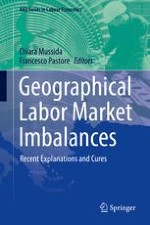2015 | OriginalPaper | Chapter
11. Family Origin and Early School Leaving in Italy: The Long-Term Effects of Internal Migration
Authors : Carmen Aina, Giorgia Casalone, Paolo Ghinetti
Published in: Geographical Labor Market Imbalances
Publisher: Springer Berlin Heidelberg
Activate our intelligent search to find suitable subject content or patents.
Select sections of text to find matching patents with Artificial Intelligence. powered by
Select sections of text to find additional relevant content using AI-assisted search. powered by
